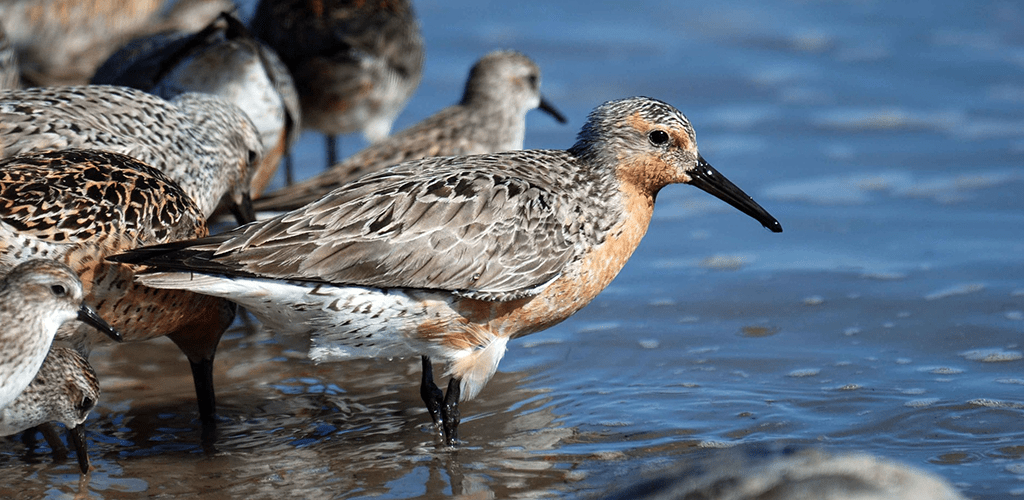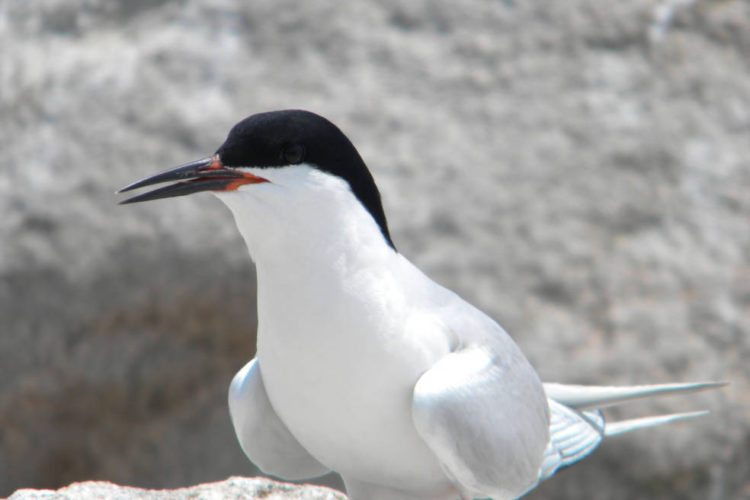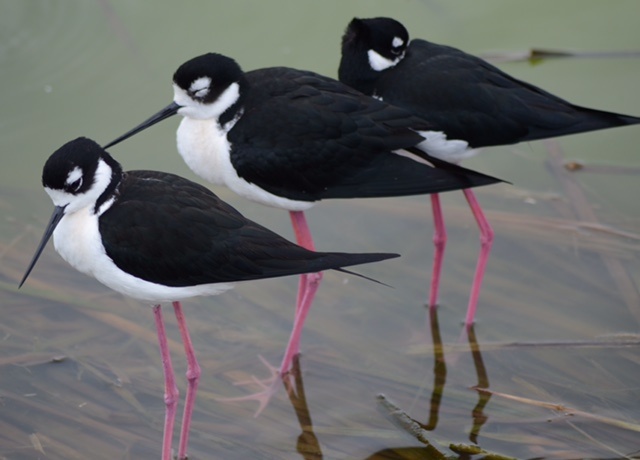We have much more to do and your continued support is needed now more than ever.
Five Birds That Benefit from Living Shorelines

It’s hard to imagine these serene paradises without wildlife, especially the harmonious calls from our feathered friends. However, man-made erosion structures built to protect shorelines, such as seawalls and bulkheads, threaten their very existence by disrupting their natural ecosystems. Thankfully, there’s a way to save the day — naturally with living shorelines!
To maintain natural stability, living shorelines incorporate vegetation or other living, natural “soft” elements along with types of harder shoreline structures (e.g. oyster reefs or rock sills). They act as a natural defense to help protect ecosystems threatened by coastal erosion and sea level rise, including important habitat for shoreline birds that rely on these areas for nesting, breeding, and foraging.
Meet five shoreline birds that benefit from living shorelines:
Piping Plover
The piping plover, named for its melodic mating call, is a North American shorebird protected by the Endangered Species Act. Found in intertidal flats and ponds along the shore, these pale colored birds blend into their habitat, favoring open sand, gravel or cobble beaches for breeding. Keep an eye out for these singing divas in winter months along coastal areas from North Carolina all the way to Texas.

Roseate Terns
Roseate Terns, an endangered species, can be found in Northeast America from Nova Scotia to the southern tip of Florida and the Caribbean Sea. These “beach bums” nest on sandy or rocky islands close to shallow waters and are one of few shorebirds that sing midflight.
During mating season, their plumage turns silver-gray, creamy white, with a rosy-pink chest and black cap, which is how this tern earned its name. A recent Fish and Wildlife Services study found roseate terns are highly sensitive to disturbances and will abandon whole colonies if they feel threatened.

Red Knot
Clocking in at 19,000 miles annually, the red knot is the marathon flier of the avian world. Migrating from the Canadian Arctic to the southern tips of Argentina and Chile, this endangered shorebird makes its stops along tidal flights, shores and coastal mudflats, and open and sandy beaches. These mega-fliers are continuously threatened along their route because of rising sea levels, shrinking shorelines, and rising temperatures.
Do you live along the shores of the Delaware Bay? If so, you’re in luck because that’s a very special detour for the red knots! Keep an eye out in the spring as they flock to the shorelines to forage for horseshoe crab eggs. One of the planet’s great natural spectacles, this annual gathering of crabs and birds, is a rite of spring that has been occurring here for millennia.

Oystercatcher
True to its name, the oystercatcher forages on mostly shellfish and marine worms with a propensity for oysters, clams, and mussels. Found along the Atlantic and Gulf of Mexico shorelines, this large shorebird forages by walking in shallow water, searching for food by sight. Shoreline stabilization projects threaten not only their diet, but their breeding habitats located in coastal areas such as sand or shell beaches, dunes, saltmarsh, marsh lands, mudflats, and dredge spoil lands.

Black-necked stilts
Black-necked stilts, with their long, thin red legs, can be found along the shallow waters of the shoreline. Building their nests on surfaces above water, such as on small islands, their habitats exist almost exclusively along shorelines. Although the North American species appears to be stable, the Hawaiian subspecies is on the 2014 State of the Birds Watch List, a list of bird species at risk of extinction. This large shorebird’s lengthy limbs are exceeded only by flamingos.

The benefits of living shorelines for shorebirds and so many other species are undeniable.
When compared to shoreline hardening techniques, living shorelines have proven to be more effective at preventing erosion, more resilient to storms and sea level rise, more cost-effective to install and maintain, and more supportive to wildlife.

Protecting the habitat for our favorite shorebirds is one important reason why the National Wildlife Federation and the Water Protection Network are urging the Corps of Engineers to streamline permitting for wildlife-friendly living shorelines, encouraging their use as an alternative to harmful seawalls and bulkheads. The National Wildlife Federation is also currently working on a living shorelines project along the Chesapeake Bay in Maryland.
To learn more about the important role that natural and nature-based approaches can play in reducing the mounting risks to our communities from weather and climate-related natural hazards, check out NWF’s recent report, Natural Defenses in Action.
Learn More




















